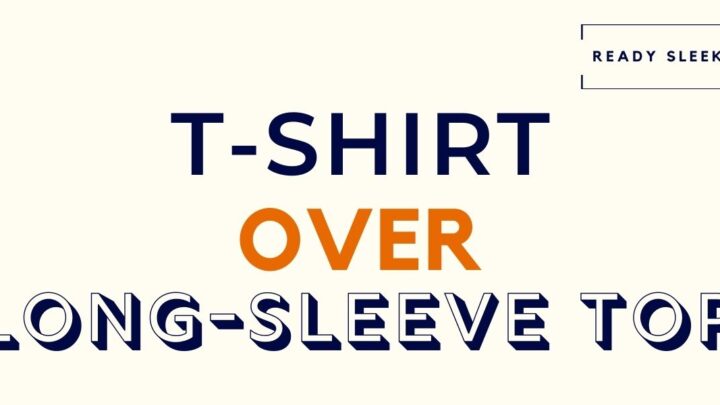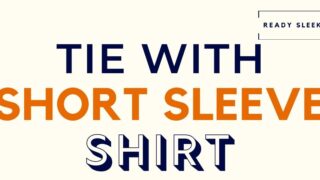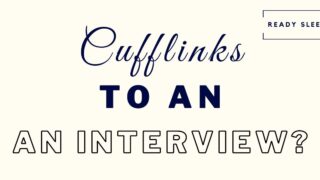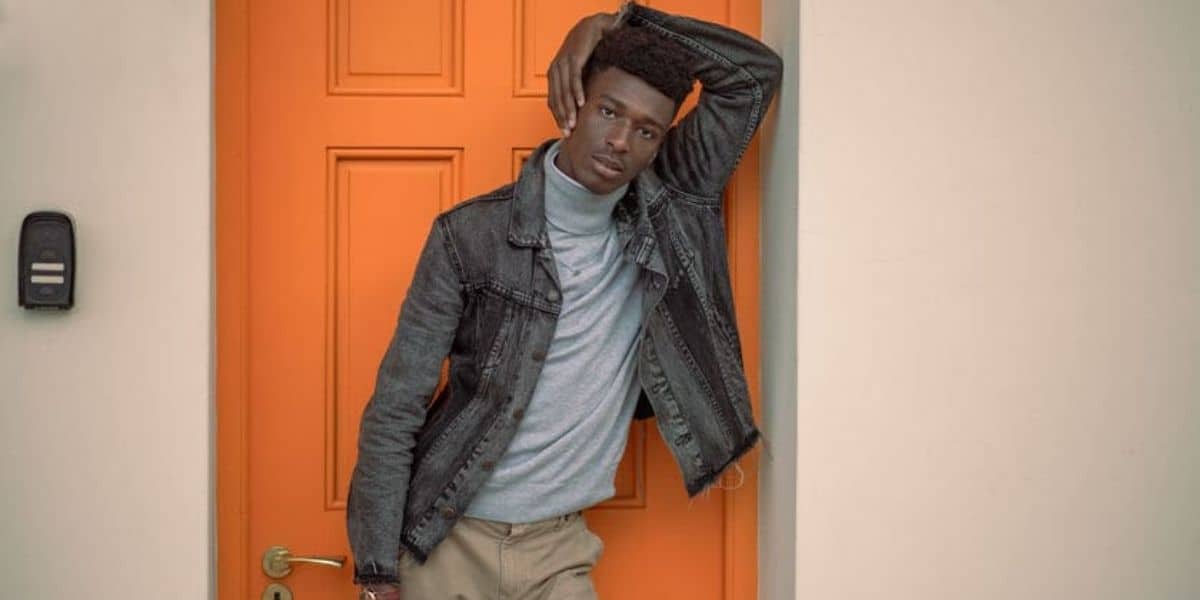Styles go in and out of favor over time, but some seem to stick around longer than others. The question is, can you wear a T-shirt over a long sleeve top?
T-shirts can be worn over long-sleeve tops as long as the T-shirt is large enough to accommodate it. While the look was more popular in the ’90s, it’s still a layered combination that can work well when the colors contrast each other nicely.
Although that’s the short answer, you’ll need more.
Here are some essential tips for making sure the combination never looks awkward or out of place.
Let’s get to it.
1. Make Sure It’s Appropriate
Wearing a T-shirt over a long sleeve top is a truly casual aesthetic. It should never be worn to settings that don’t fall firmly into the casual category.
It looks similar to this (illustration from an Amazon product):

Trying to wear this combination in smarter settings rarely ever works out well.
While it would be absolutely fine to wear when hanging out with friends, going to the movies, or eating at cheap restaurants, don’t wear it when something a little sharper is in order.
The look shouldn’t ever be considered “smart casual”.
When you hear those words, think of polo shirts, Henleys, chinos, and dark denim jackets.
The double-sleeved appearance of a T-shirt over long sleeves just won’t cut it.
Once you’re happy that the combination would work for the setting you’re dressing for, consider the following tips.
2. Choose A T-Shirt A Size Larger
The main trouble with layering items in ways that aren’t exactly “typical” is that it can lead to things looking a little tight and feeling a little uncomfortable.
T-shirts weren’t designed to be worn as outer layers.
Even if the long sleeve top you’re wearing under it was a nice and slim fit, there’s a good chance that one of your regular T-shirts will look and feel too snug over it.
The simplest solution to this would be to simply choose a T-shirt that’s big and roomy enough for the long sleeve top to easily be worn underneath.
Oversized T-shirts are becoming increasingly common and a popular item of casual streetwear.
But you don’t even need to go for an obvious oversized T-shirt.
Simply choosing a T-shirt that’s a size larger than what you would usually go for if you were wearing it as an inner layer should do the trick.
3. Go For A Slim-Fitting Long Sleeve Top
Choosing a large T-shirt was the first step. The long sleeve top you choose is just as important.
It’s worth mentioning that by “long sleeve top” I mean a buttonless (except for a couple of buttons), collarless, casual long sleeve top.
Henley shirts can work quite well for this.
Here’s an example of one on Amazon:

These are really the only long sleeve tops you should consider wearing under a T-shirt.
Trying to wear a button-down Oxford shirt under a T-shirt won’t ever turn out well.
Once you’ve got a buttonless, collarless long sleeve top, assess the fit.
Would it fit tight enough to allow you to comfortably wear your T-shirt of choice over it?
If not, it’s probably not going to work.
Don’t get me wrong – it shouldn’t be tight enough to be obviously tight or uncomfortable.
But it should wrap snugly enough for the T-shirt to be worn over it without causing a problem.
A slim-fit long sleeve top should usually do the trick, but it really depends on how “oversized” you’ve gone with the T-shirt.
4. Always Go For Contrast
The great thing about the double-sleeved appearance is that it gives you the opportunity to add contrasting colors to your outfit.
In other words, it looks great when the T-shirt and the long sleeve top are in colors that contrast, yet complement each other.
In fact, when they’re too similar to each other, it often doesn’t look right.
Going for contrasting colors so that the sleeves of the long sleeve top really stand out in comparison to the T-shirt, is always the best way to go.
However, it’s important not to choose colors that conflict or clash with each other.
A simple way to prevent this is by ensuring that one of the items is in a neutral and minimalist color like white, off-white, beige, grey, black, navy blue, or olive green.
These colors are easy to combine with many other colors because they’re muted. They’re considered “background” colors that allow you to add on other louder and bolder colors without causing a color clash.
For example, go for a neutral and muted long sleeve top (e.g white) with a bold-colored T-shirt on top (e.g red).
Alternatively, go for a neutral and muted T-shirt (e.g light grey) with a bold-colored T-shirt on top (e.g blue).
Mixing light tones and dark tones also works very well.
Two neutral colors can also be combined pretty easily if you didn’t want to add brighter/bolder colors into the mix.
Just avoid mixing bright/bold T-shirts and bright/bold long sleeve tops because it’ll usually be too much and may cause a color clash.
5. Consider A Double-Layered T-Shirt Instead
While it isn’t as easy to find them as it was in the late 90s or early 00s, it isn’t impossible.
“Double-layered T-shirts” have the same look as simply wearing a T-shirt over a long sleeve top.
However, they’re actually T-shirts with long-sleeves in a different color sewn onto the end.
In other words, it’s a single item instead of two items layered on top of each other.
They usually work well because the long sleeves usually come in a color or fabric that nicely compliments that of the T-shirt part.
Not always – taste is definitely subjective and there’s a chance you’ll be able to layer a combination that looks a lot better.
But buying a ready-made double-layered T-shirt should take some of the effort out of having to put one together.
In addition, it’ll usually feel more comfortable and less tight as well.
Here’s an example on Amazon:

6. Try Rolling The Sleeves Up
Some may say this defeats the purpose. After all, what’s the point of layering a T-shirt over a long-sleeve top if you’re simply going to roll up those long sleeves in any case?
But it can actually lead to quite a nice effect.
You’ll still get the contrast in color/fabric between the T-shirt and the long sleeves, but it’ll be more subtle as the long sleeves will be partly rolled up.
You should still be able to see part of the long sleeves under the T-shirt – it’s just that those sleeves won’t reach all the way down to the wrists.
It actually has a more modern feel to it.
While it’s making a bit of a resurgence, at the end of the day, the T-shirt over long sleeves combo is pretty late 90s and early 00s.
If you want to add your own touch to it, try rolling the long sleeves up to a point where they’re still clearly visible, but also out of the way.
7. It Works Well With Jeans
This combination works great with jeans.
It’s difficult to know exactly why, but one reason is likely to be that it’s a very casual combination.
Jeans are a staple of casual attire and are easy to pair with other casual items.
A possible reason could also be that the T-shirt over long sleeves look is pretty 90s. Jeans were around way before the 90s, but baggy, stonewashed jeans were hugely popular in the 90s.
You don’t necessarily need to go for baggy jeans.
You’ve actually got the freedom to go for a wide variety of jeans including dark, light, tapered, stonewashed, acid-washed, distressed, etc.
It really doesn’t matter. There’s a strong chance it’ll work with the combination, blending well with the overall aesthetic.
Sticking to this tip, as well as the other ones in this list, should ensure you pull off the T-shirt over long-sleeve top pairing every time.
Enjoy.
Ready Sleek founder. Obsessed with casual style and the minimalist approach to building a highly functional wardrobe. Also a fan of classic, vintage hairstyles.







